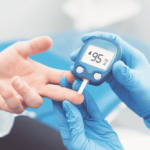The healthcare sector is active as expected during the pandemic. During a time when it seems there’s no rest for the weary healthcare professionals, technology is a saving grace that’s needed as a necessity more than a luxury.
The pandemic may have created an unexpected boost to the technology used in the healthcare industry. Just as it gives great help towards creating quotations for home insurance, it can also help the healthcare and medical sector become more efficient while also making life easier for patients and doctors alike. The situation has only fast-tracked the modernization of the industry, which it has been on for many years.
Even then, some areas may be lagging more than others that have achieved their tech usage goals. Here is a look at how technology can help during the pandemic as well as how the pandemic has helped create a sense of urgency for the development of techniques meant to make the adoption of technology easier and quicker.
Quicker Deployment for an Immediately Felt Impact
Technology makes it easier for medical solutions to be deployed and used in an area that severely needs them. During the pandemic, there are plenty of places that are like that. Most of them are experiencing systemic issues which have been compounded in scale because of the pandemic.
Mobile technologies were also used to help increase the accuracy of admissions in hospitals where the infected are treated, as well as the efficiency in which they are detected. They are treated with accuracy according to the severity of their COVID-19 illness. Tech was also used in instances where supply shortages needed to be solved immediately.
These are only some reasons why the healthcare community needs to deploy technology immediately. Even now, it’s helping in the fight against the coronavirus pandemic.
Helping Solve the Shortage of Staff
The pandemic hasn’t been the only thing that’s affected the work capacity of hospitals. Other reasons are tied to the growth of populations, as well as the movement of the world-this includes natural disasters and accidents, even in the workplace.
There’s a way that technology can help make service in healthcare faster through a connected workforce. This is through giving real-time communication and collaboration through gadgets that emulate computers and that can send texts.
It’s already commonplace in the healthcare industry today. But at a time before that, it’s one thing that was cited as a big boon towards helping them become prepared for dire situations, such as the one today.
Managing Patients in a Hospital
Hospitals and their workforce are being inundated by individuals that are sick with the pandemic today. It would be a bigger disaster if it weren’t for systems that have been set in place in recent times, and one that’s been growing. Patients are now fitted with a bar-coded wristband for easier identification as well as for easier scanning through handheld devices.
There are other types of devices that can be used to care for patients as well. This includes the much-talked-about internet-of-things (IoT) devices that can be used to monitor a patients’ vital signs, as well as alert staff when an emergency occurs, or a routine check is due.
Telehealth Expansions and 5G Connections
With stay-at-home orders still in place in some areas with high infection rates, telehealth has become a big aid to people who need to have consultations done. Many hospitals and health systems are already using this technology, to help ease the demand in access to consultations while staying from an area of relative safety.
In partnership with this, some companies have come up with a better network and broadband access to help those using telehealth services. For instance, the company Verizon has launched a 5G wireless network that offers faster download speeds. The Federal Communications Commission has also added $802.7 million to its rural healthcare program to cater to the need for high-speed broadband connections during the pandemic.
AI Chat Bots Answering Queries
In instances where live-chat agents aren’t available, technology comes to the rescue. Artificial intelligence chatbots are being used to provide patients with someone who can answer their inquiries. Through using machine processing in assisting patients at a time when information is really needed, especially with vaccines being rolled out – healthcare providers have been able to give their clients much-needed assistance as well as to “triage” their needs, in a few cases.
The healthcare system still has a long way to go to call itself modernized. But with these small, slow steps, it’s constantly evolving towards its next iteration. It also turned out that the pandemic was the “boost” it badly needed.
The Editorial Team at Healthcare Business Today is made up of skilled healthcare writers and experts, led by our managing editor, Daniel Casciato, who has over 25 years of experience in healthcare writing. Since 1998, we have produced compelling and informative content for numerous publications, establishing ourselves as a trusted resource for health and wellness information. We offer readers access to fresh health, medicine, science, and technology developments and the latest in patient news, emphasizing how these developments affect our lives.







